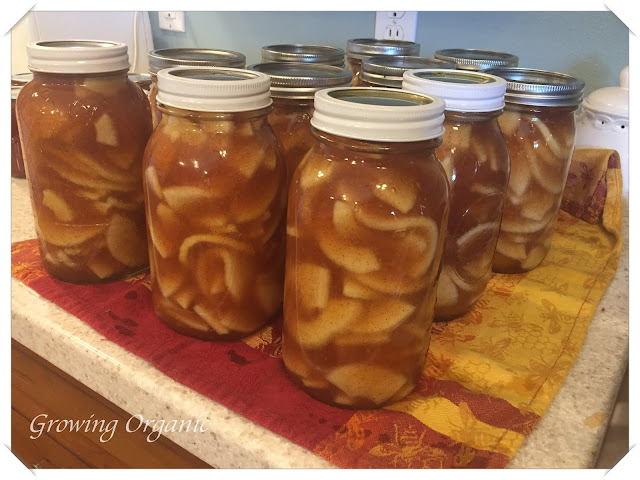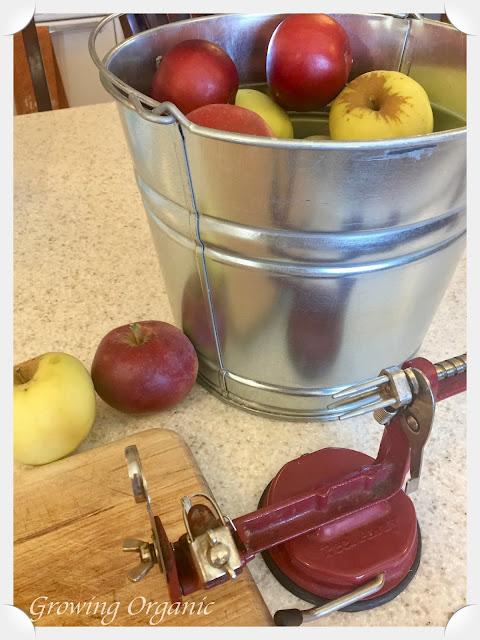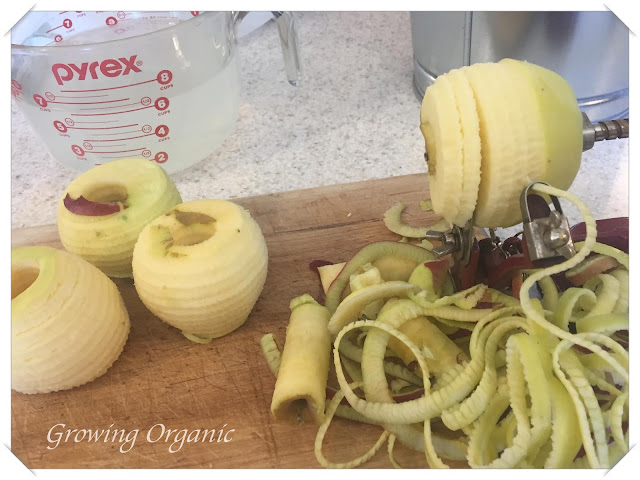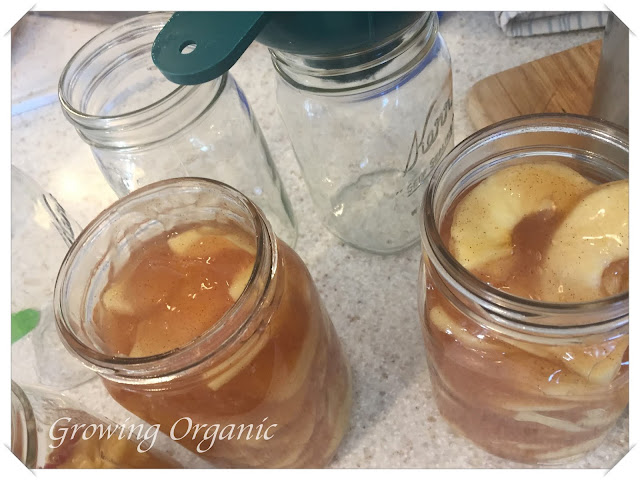Fall is my favorite time of year. Always grateful for the good harvest my family enjoys and the changes fall brings. With Thanksgiving approaching fall is always a time to reflect on my many blessings. There are also so many delicious thing unique to fall....apples, apple pie, cider, pumpkins, winter squash, potatoes, and so much more. Today I thought I would share a recipe for canning apple pie filling so you can enjoy apple pie all year.
Basic supplies your will need include a water bath canner and your favorite canning gadgets, an apple corer peeler, and a heavy stock pot.
A few words on choosing apples. Baking apples are tart, crisp, and hold their shape when cooked. Always use firm, crisp, fresh apples and you will not be disappointed in the finished product. For this batch I used one of my favorite dessert apples Sundance. This is a cross between a Golden Delicious, Macintosh, and Rome. It is very productive late ripening apple. Very disease resistant.
I use an apple corer to peel and core the apples. It's quick and easy. If you peel and core the apples by hand slice in no bigger than 1/2 inch slices.
Prep:
- Wash apples
- Have a bowl of cold water with lemon juice or ascorbic acid to slice apples into to prevent browning.
- Slice around 4-6 cups then blanch that batch and add it to the filling
- Have a shallow pot of water on the stove which will be used to blanch the apple slices
- Have jars, lids, and rings prepped
I first prepare the pie filling and cover it with a lid. I then peel and core the apples about 4- 6 cups at a time blanching each batch for less than one minute. Blanching removes the oxygen from fruits such as apples and pears and prevents browning. I then drain the slices in a strainer and add each batch to the filling stirring until covered. Repeat peeling, coring, slicing, and blanching until filling is full of apple slices. One quart of pie filling requires about 3 1/2 cups of apples.
A word about blanching the apples. Don't skip this step. Apple as well as pears have a lot of oxygen in the flesh. Blanching forces the oxygen out and the canned product will not brown.
Quantities of Ingredients Needed
Blanched sliced fresh apples 3 1/2 cups 6 quarts
Granulated sugar or super fine sugar 3/4 c + 2 Tbsp 5 1/2 cups
Clear Jel 1/4 cup 1 1/2 cups
Cinnamon 1/2 tsp 1 Tbsp
Cold Water 1/2 cup 2 1/2 cups
Apple Juice 3/4 cup 5 cups
Bottled Lemon Juice 2 Tbsp 3/4 cup
Nutmeg (optional) 1/8 tsp 1 tsp
Prepare filling:
Combine sugar, clear gel, cinnamon in a large kettle add cold water and apple juice. If you like nutmeg add it at this time. I personally do not like nutmeg. Stir and cook on medium heart until mixture thickens and begins to bubble. Add lemon juice and boil one minute longer stirring constantly. Set aside cover with a lid.
Peel, core, and slice apples about 6 cups at a time. Blanch each batch in boiling water for 1 minute. Drain in a strainer and fold hot fruit into the filling. Continue preparing batches 6 cups at a time until done.
Processing Apple Pie Filling:
Fill jars with mixture leaving 1 inch head space. Adjust lids and process in a water bath canner. Start timing when boiling. Remove lid after processing time and let jars remain in the canner for 10 minutes this prevents siphoning of liquid.
Pints or Quarts Processing Time
0-1,000 25 minutes
1,001-3,000 30 minutes
3,001-6,000 35 minutes
6,001-above 40 minutes
After jars are sealed and cooled remove lids and wipe down ring area. Store without the rings.

































